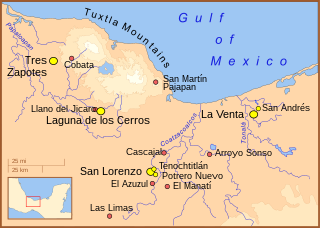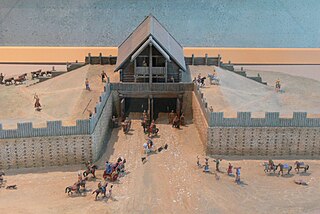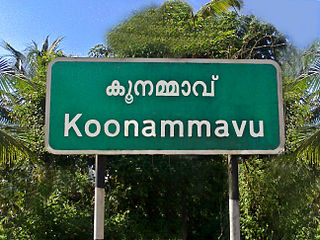This article needs additional citations for verification .(December 2009) |
| |||
|---|---|---|---|
| +... | |||
The year 1802 in archaeology involved some significant events.
This article needs additional citations for verification .(December 2009) |
| |||
|---|---|---|---|
| +... | |||
The year 1802 in archaeology involved some significant events.
The Iron Age is the final epoch of the three historical Metal Ages, after the Chalcolithic and Bronze Age. It has also been considered as the final age of the three-age division starting with prehistory and progressing to protohistory. In this usage, it is preceded by the Stone Age and Bronze Age. These concepts originated for describing Iron Age Europe and the ancient Near East. In the archaeology of the Americas, a five-period system is conventionally used instead; indigenous cultures there did not develop an iron economy in the pre-Columbian era, though some did work copper and bronze. Indigenous metalworking arrived in Australia with European contact.

The Olmecs or Olmec were an early known major Mesoamerican civilization, flourishing in the modern-day Mexican states of Veracruz and Tabasco from roughly 1200 to 400 BCE during Mesoamerica's formative period. They were initially centered at the site of their development in San Lorenzo Tenochtitlán, but moved to La Venta in the 10th century BCE following the decline of San Lorenzo. The Olmecs disappeared mysteriously in the 4th century BCE, leaving the region sparsely populated until the 19th century.

Philomena, also known as Saint Philomena or Philomena of Rome was a virgin martyr whose remains were discovered on May 24–25, 1802, in the Catacomb of Priscilla. Three tiles enclosing the tomb bore an inscription, Pax Tecum Filumena, that was taken to indicate that her name was Filumena, the English form of which is Philomena. Philomena is the patron saint of infants, babies, and youth, and is known as "The Wonderworker".

Philip Parris Lynott was an Irish musician, songwriter, and poet. He was the co-founder, lead vocalist, bassist, and primary songwriter for the hard rock band Thin Lizzy. He was known for his distinctive pick-based style on the bass and for his imaginative lyrical contributions, including working-class tales and numerous characters drawn from personal influences and Celtic culture.

Magdalene asylums, also known as Magdalene laundries, were initially Protestant but later mostly Roman Catholic institutions that operated from the 18th to the late 20th centuries, ostensibly to house "fallen women".

An oppidum is a large fortified Iron Age settlement or town. Oppida are primarily associated with the Celtic late La Tène culture, emerging during the 2nd and 1st centuries BC, spread across Europe, stretching from Britain and Iberia in the west to the edge of the Hungarian Plain in the east. These settlements continued to be used until the Romans conquered Southern and Western Europe. Many subsequently became Roman-era towns and cities, whilst others were abandoned. In regions north of the rivers Danube and Rhine, such as most of Germania, where the populations remained independent from Rome, oppida continued to be used into the 1st century AD.

Paleo-Indians were the first peoples who entered and subsequently inhabited the Americas towards the end of the Late Pleistocene period. The prefix paleo- comes from the Ancient Greek adjective: παλαιός, romanized: palaiós, lit. 'old; ancient'. The term Paleo-Indians applies specifically to the lithic period in the Western Hemisphere and is distinct from the term Paleolithic.
The Confraternities of the Cord are pious associations in the Roman Catholic Church whose members wear a cord, girdle, or cincture in honour of a saint whom they wish to honour and to bear in mind some special grace or favour which they hope to obtain through the saint's intercession.

The Catacomb of Priscilla is a large archaeological site on the Via Salaria in Rome, Italy, situated in what was a quarry in Roman times. The catacombs extend downward for over seven miles, making them one of Romes most expansive catacombs. it was used for thousands of Christian burials from the late 2nd century through the 4th century. The origin of the catacomb's namesake is highly contested and theorized. In one theory, Priscilla belonged to the Acilii Glabriones family and was the woman patron who donated the site. The family name can be found etched into the hypogeum.

St Philomena's Catholic High School for Girls is a school for girls in Carshalton in the London Borough of Sutton.

The Halaf culture is a prehistoric period which lasted between about 6100 BC and 5100 BC. The period is a continuous development out of the earlier Pottery Neolithic and is located primarily in the fertile valley of the Khabur River, of south-eastern Turkey, Syria, and northern Iraq, although Halaf-influenced material is found throughout Greater Mesopotamia.
Claude Bessy, also known as Kickboy Face, was a French writer, magazine editor, singer, video producer, and painter. He is noted as an early organizer in the Los Angeles punk scene in the mid-1970s and was involved in the British post-punk scene in the 1980s.

Koonammavu is a northern suburb of Kochi city which is associated in the Kochi metropolitan area. Koonammavu (Valluvally) is a census town in Kottuvally Panchayat, North Paravur Taluk, Ernakulam District, Kerala, India and lies between Edappally and North Paravur adjacent to Varappuzha.

The 70th annual Venice International Film Festival took place in Venice, Italy from 28 August to 7 September 2013. American film director William Friedkin was presented with a lifetime achievement award. Italian film director Bernardo Bertolucci was the president of the jury. He was previously the president of the jury at the 40th edition in 1983. Gravity, directed by Alfonso Cuarón, was the opening film of the festival. Italian actress Eva Riccobono hosted the opening and closing nights of the festival.
Consolata Boyle is an Irish costume designer based in Dublin. She is a frequent collaborator of English director Stephen Frears and has been nominated three times for the Academy Award for Best Costume Design for her work on three of his films: The Queen (2006), Florence Foster Jenkins (2016) and Victoria & Abdul (2017).

Philomena is a 2013 drama film directed by Stephen Frears, based on the 2009 book The Lost Child of Philomena Lee by journalist Martin Sixsmith. The film stars Judi Dench as Philomena Lee, an elderly woman who has been searching for her son for 50 years, and Sixsmith's efforts to help her find him.

Michael Anthony Hess was an Irish-born American lawyer, deputy chief legal counsel and later chief legal counsel to the Republican National Committee (RNC) in the late 1980s and early 1990s.
Annie Philomena Lee is an Irish woman whose life was chronicled in the 2009 book The Lost Child of Philomena Lee by Martin Sixsmith. The book was made into a film titled Philomena (2013), which was nominated for four Academy Awards, including Best Actress for Judi Dench's portrayal of Philomena, and Best Picture.

Philomena Lynott was an Irish author and entrepreneur. She was the mother of Thin Lizzy frontman Phil Lynott. Her autobiography, My Boy, documents their relationship. She was the proprietor of the Clifton Grange Hotel in Manchester, which provided accommodation for a number of bands in the 1970s including Thin Lizzy.

Archaeology is promoted in Jersey by the Société Jersiaise and by Jersey Heritage. Promotion in the Bailiwick of Guernsey being undertaken by La Société Guernesiaise, Guernsey Museums, the Alderney Society with World War II work also undertaken by Festung Guernsey.